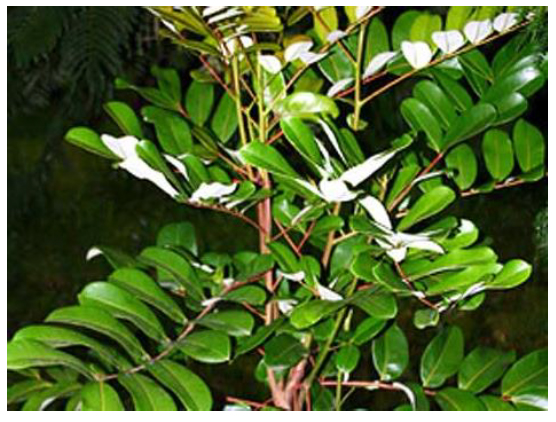Simarouba amara
Family: Simaroubaceae
Simarouba amara is a species of tree in the family Simaroubaceae, found in the rainforests and savannahs of South and Central America and the Caribbean. Commonly known as “Lekshmi Tharu”. The tree is evergreen, but produces a new set of leaves once a year. It requires relatively high levels of light to grow and grows rapidly in these conditions, but lives for a relatively short time. In Panama, it flowers during the dry season in February and March, whereas in Costa Rica, where there is no dry season it flowers later, between March and July. As the species is dioecious, the trees are either male or female and only produce male or female flowers. The small yellow flowers are thought to be pollinated by insects, the resulting fruits are dispersed by animals including monkeys, birds and fruit-eating bats and the seeds are also dispersed by leaf cutter ants.
The leaves and bark of S. amara have been used as an herbal medicine to treat dysentry, diarrhea, malaria and other illnesses.
The main biologically active compounds found in S. amara are the guassinoids, a group of tritriterpenes including ailanthinone, glaucarubione, and holacanthone. These have been reported to kill protozoa, amoeba, plasmodium (the cause of malaria).
